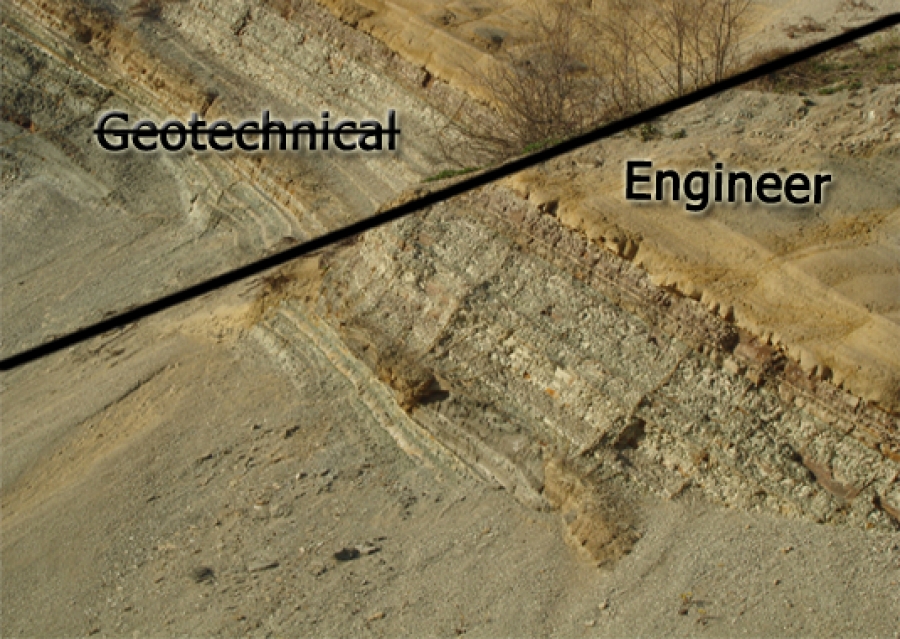Top Geotechnical Engineering Companies in South Africa: Specialized Solutions for Facilities Projects
Top Geotechnical Engineering Companies in South Africa: Specialized Solutions for Facilities Projects
Blog Article
Just How Consulting Civil Design Firms Contribute to Effective Task Management and Layout Application
Consulting civil engineering firms are important to the success of building projects, combining technical proficiency with tactical oversight. Their duty incorporates not just the implementation of usefulness studies but additionally the execution of innovative task administration techniques that enhance procedures and boost stakeholder involvement. By concentrating on design optimization and risk mitigation, these firms guarantee that jobs are not just feasible but additionally sustainable and cost-effective. However, the subtleties of their contributions commonly stay underexplored, motivating a better examination of the certain approaches and methods that underpin their effectiveness - geotechnical engineering companies in south africa.
Function of Civil Engineers
Comprehending the duty of civil engineers is essential for the effective administration of construction tasks. Civil engineers function as the backbone of framework development, ensuring that jobs are designed and implemented to meet sustainability, functionality, and safety and security criteria. Their experience encompasses different facets of design, including architectural, environmental, and geotechnical specializeds.
Civil designers are in charge of conducting feasibility research studies, which evaluate the stability of suggested projects by examining financial, technical, and environmental factors. They develop in-depth plans and specifications, incorporating cutting-edge solutions to optimize materials and resources. During the building stage, civil designers look after the task, collaborating with service providers, engineers, and stakeholders to make certain adherence to make requirements and governing requirements.

Job Preparation Approaches
Reliable task preparation approaches are vital for ensuring that construction projects are performed smoothly and efficiently. Consulting civil engineering firms play a crucial function in this process by using thorough preparation approaches that attend to different job phases. At first, a detailed analysis of job range and client requirements is conducted, permitting the identification of crucial turning points and deliverables.
Moreover, these companies make use of devices such as Gantt graphes and job administration software program to create in-depth timelines, making it possible for effective scheduling of jobs and source allocation. This structured technique aids to anticipate possible traffic jams and allocate needed sources proactively. Threat management is another crucial part; companies conduct danger assessments to recognize prospective issues that might emerge during the project's lifecycle, implementing reduction techniques to minimize interruptions.
Furthermore, stakeholder engagement is highlighted throughout the preparation phase. Routine interaction with clients, contractors, and regional authorities makes certain that all celebrations are straightened with project objectives and timelines. By integrating these approaches, seeking advice from civil design firms boost the probability of project success, making certain adherence to budget plan constraints and regulative demands while fostering a joint environment.
Design Optimization Methods
Design optimization methods are vital for boosting the performance and sustainability of civil engineering about his jobs. These strategies entail the organized evaluation of design parameters to achieve the very best possible outcomes while reducing expenses and resource use. By using sophisticated computational tools and algorithms, engineers can evaluate different design choices and select the most efficient choices based on details project criteria.
One widely made use of strategy is parametric layout, which permits for the manipulation of style variables to observe their effect on general task efficiency. This iterative process causes cutting-edge services that not only satisfy practical demands yet likewise stick to environmental standards. In addition, techniques such as worth design focus on optimizing job components to take full advantage of worth while lowering unneeded prices.
Furthermore, the combination of Structure Information Modeling (BIM) helps with better collaboration among stakeholders, making it possible for real-time adjustments and improvements to designs. This holistic sight fosters a thorough understanding of the job, resulting in educated decision-making. Eventually, effective design optimization techniques cause boosted task timelines, decreased waste, and boosted structural efficiency, contributing to the total success of civil engineering undertakings.
Risk Monitoring Methods
Risk administration approaches are important in click site guaranteeing the effective delivery of civil design tasks, as they assist determine, evaluate, and mitigate prospective dangers that can impact job outcomes. Efficient threat management is a methodical procedure that involves the identification of dangers, analysis of their possibility and effect, and the growth of approaches to address them.
Consulting civil engineering firms commonly employ a combination of qualitative and measurable threat assessment techniques (geotechnical engineering companies in south africa). Qualitative methods, such as brainstorming sessions and skilled meetings, aid collect understandings on potential risks from various stakeholders. On the other hand, quantitative methods include analytical evaluation and modeling to figure out the chance and possible impact of identified risks
Once risks are examined, companies carry out reduction approaches, which might consist of risk avoidance, decrease, transfer, or approval. This could involve redesigning task parts to remove threats or safeguarding insurance policy to counter possible economic losses. Constant surveillance and evaluation of risks throughout the task lifecycle are additionally necessary, enabling for timely adjustments to take the chance of monitoring methods as new risks emerge.
Collaborative Interaction Practices
Enhancing job outcomes via collective communication techniques is crucial for seeking advice from civil engineering companies. Reliable communication fosters a society of openness and depend on among stakeholders, which is crucial for the effective this link implementation of engineering tasks. By applying organized communication channels, firms can ensure that all parties-- clients, contractors, and staff member-- are aligned on project goals, timelines, and deliverables.
Routine meetings, both formal and casual, facilitate the exchange of ideas and responses, enabling for real-time analytic and decision-making. Making use of collective devices such as project administration software motivates documents and tracking of progression, while allowing instant access to essential details.
In addition, active listening and open dialogue are crucial components in a joint environment. By valuing varied perspectives, firms can innovate and adapt layouts that fulfill both technological requirements and customer expectations. Furthermore, promoting a team-oriented ambience minimizes misconceptions and elevates the general top quality of job.

Final Thought
In verdict, speaking with civil design companies are integral to effective project monitoring and layout execution. Inevitably, the competence and methodologies made use of by consulting civil designers considerably add to attaining project goals while maximizing and lessening costs resource application.

In verdict, speaking with civil engineering firms are integral to effective task administration and style execution.
Report this page